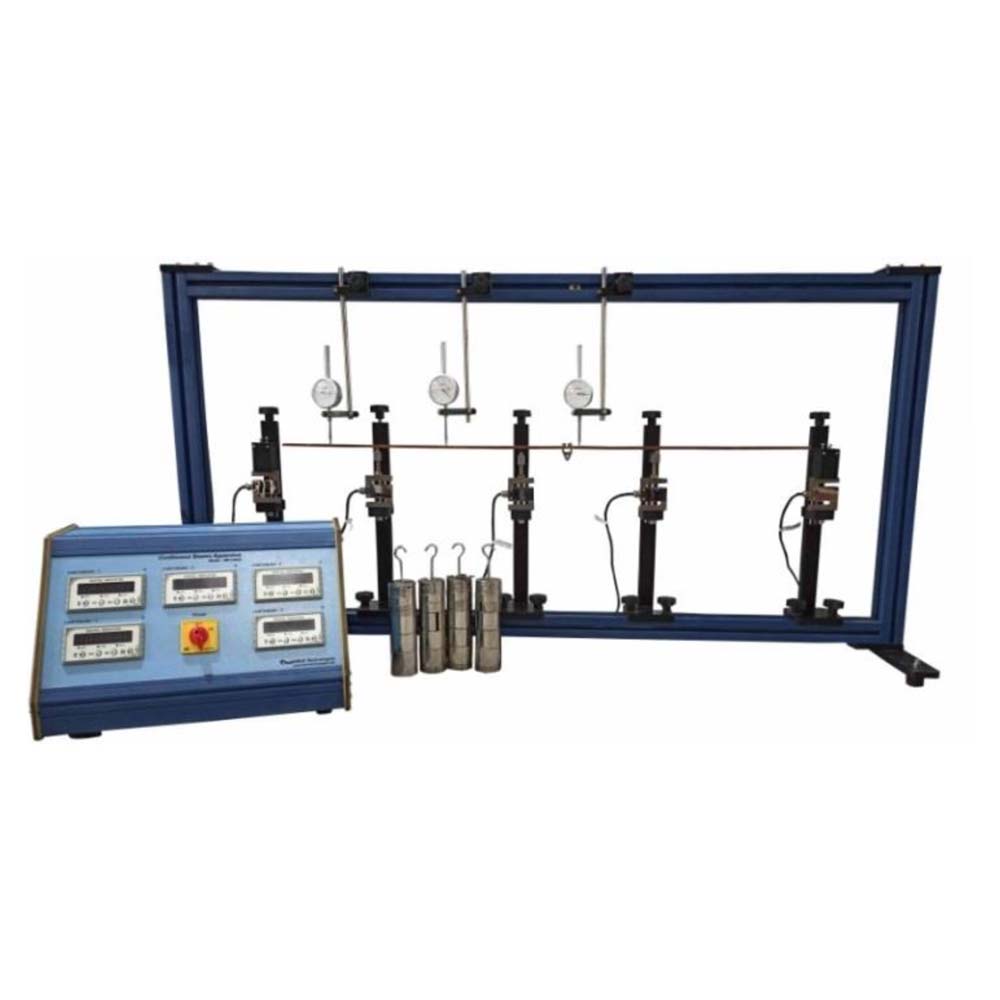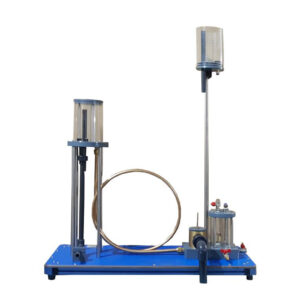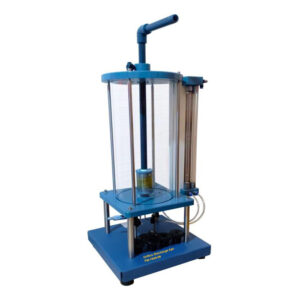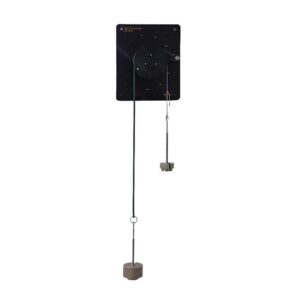A Test Frame is compatible with the experiment hardware. Students can use up to three supports to support a beam. Students can arrange the supports under the beam in a variety of ways because they are movable. Students load the beam with masses on weight hangers. A load cell is built onto each support to measure vertical reactions. To a Digital Force Display device, they are connected. Students can either fix or allow two of the load cells’ sinking knife-edge supports, which have a fixed displacement, to sink. Students can clamp the beam or rest it on a knife edge using the third support load cell.The load cell on this apparatus can withstand the bending moment while precisely measuring the vertical reaction thanks to its innovative design. The manual discusses how to operate the equipment, provides experiment protocols, and provides information on the equipment, including sample experiment results. The company can provide the supplemental Software for use on a compatible computer in order to conduct further “virtual” tests. The virtual experiments serve as a simulation of the hardware testing that can be run. Additionally, they increase the variety of tests available beyond what is possible with just the hardware, such as larger loads, uniform loads, or different test specimens. The student’s learning experience is expanded as a result.
- Experiments:
- Investigation of the deflection for statically determinate and statically indeterminate straight beams
* cantilever beam
* inter mediate beam, single-span beam, dual- or triple-span beam
* formulation of the differential equation for the elastic line - Deflection on a cantilever beam
* measurement of deflection at the force application point - Deflection of a dual-span beam on three supports
* measurement of the support reactions
* measurement of the deformations - Influence of the material (modulus of elasticity) and the beam cross-section (geometry) on the elastic line.
- Maxwell-Betti coefficients and law application of the principle of virtual work on statically determinate and indeterminate beams.
- Determination of lines of influence
* arithmetically
* qualitatively by way of force method (Müller-Breslau)
Specifications:
- Elastic lines of statically determinate and indeterminate beams under various clamping conditions.
- 3 steel beams with different cross-sections.
- 3 brass beams with different cross-sections.
- 3 aluminum beams with different cross-sections.
- 3 MS beams with different cross-sections.
- 1 coper beam.
- 3 articulated, height-adjustable supports load cells
- 2 support with clamp fixing.
- Relationship between load and deflection for beams and Cantilevers.
- Elastic line under different support conditions.
- Demonstration of Maxwell-Betti’s law.
- Supporting forces in indeterminate beams




